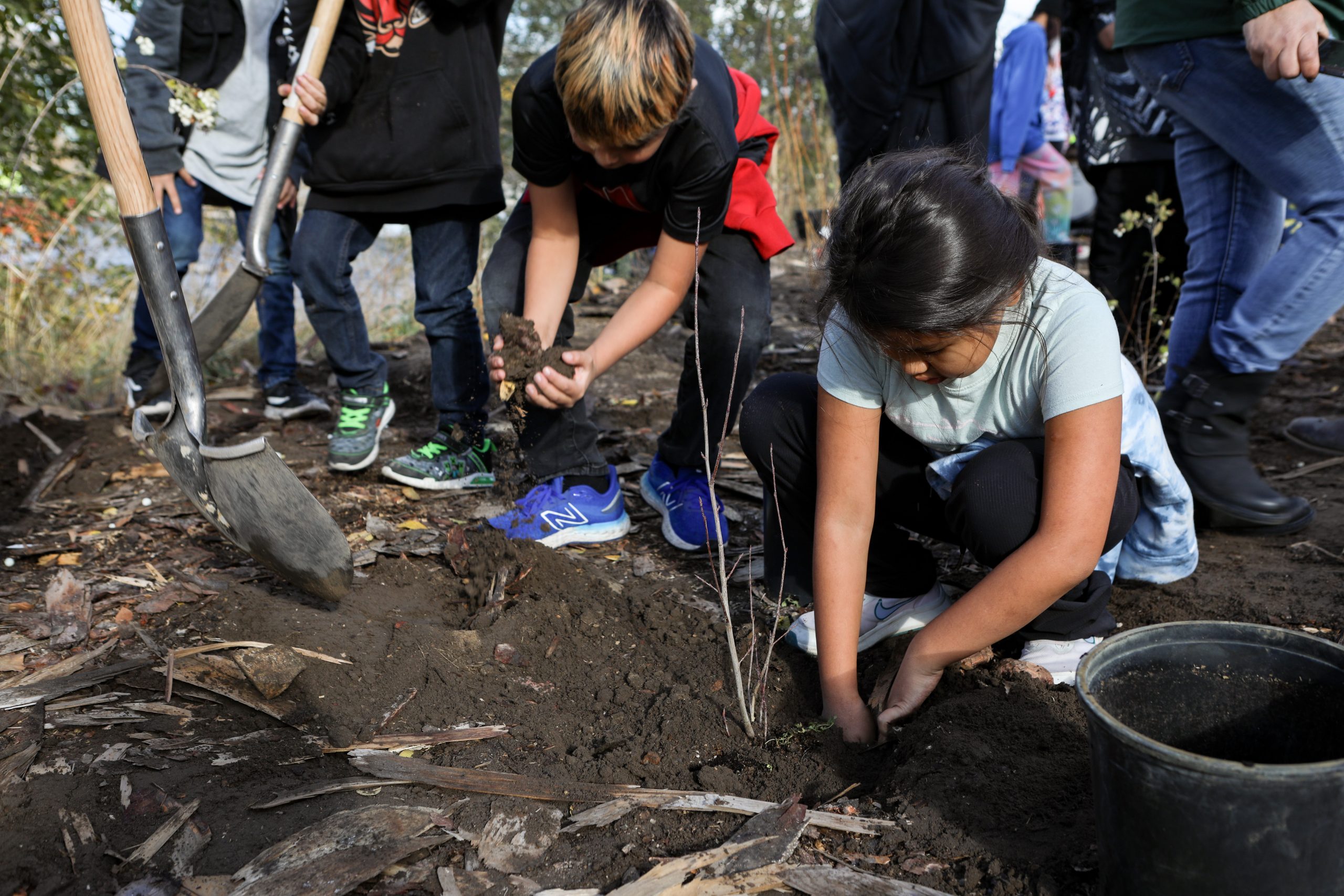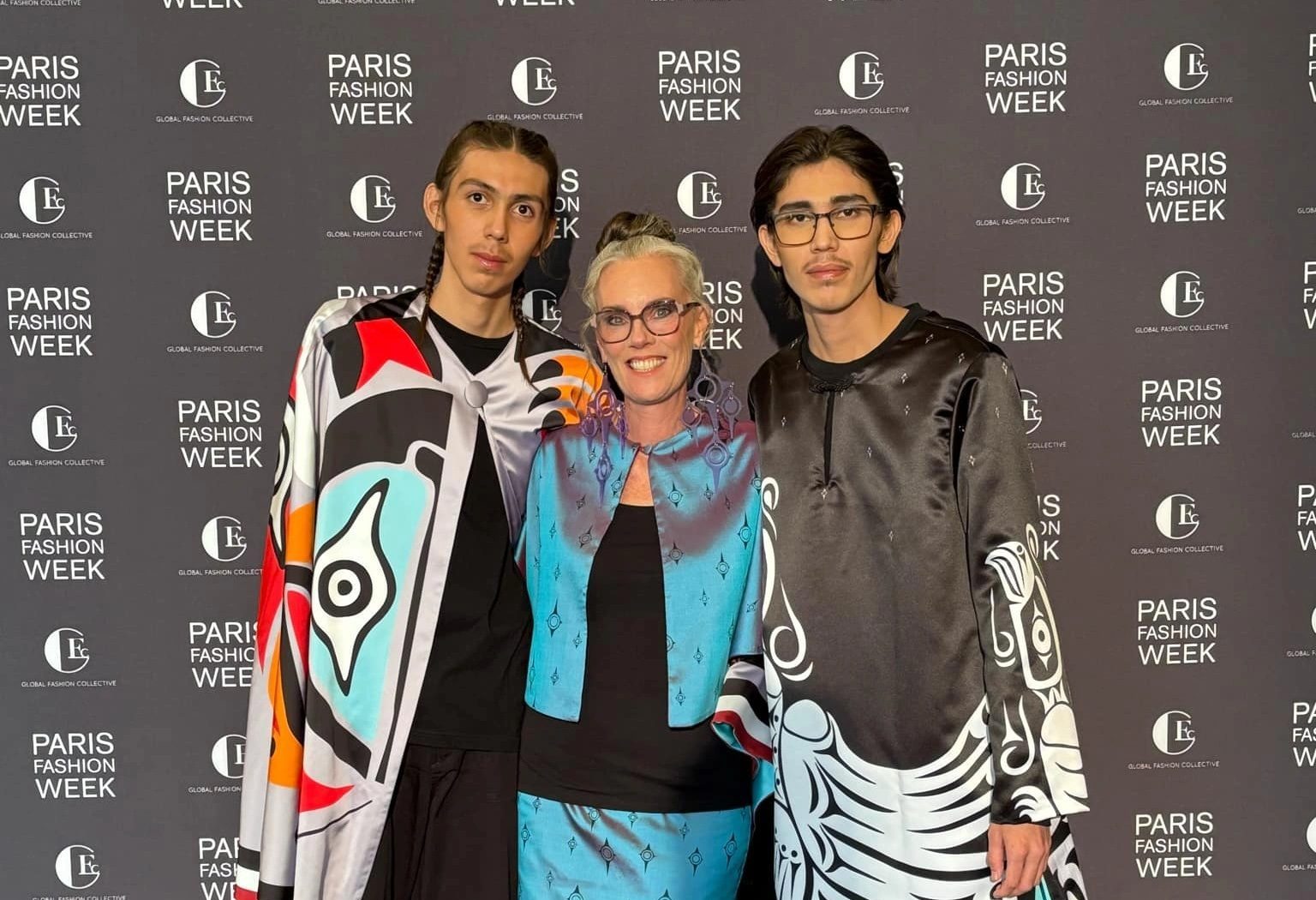‘Honouring and celebrating stories’: Emerging Coast Salish artist inspired by community
Eliot White-Hill, Kwulasultun, from Snuneymuxw First Nation, describes art as a transformative journey – one that helped root himself into his community, and finding himself and his voice through art.

Eliot White-Hill, Kwulasultun, from Snuneymuxw First Nation, describes art as a transformative journey – one that helped root himself into his community, and finding himself and his voice through art.
“After my great-grandmother passed away, I started researching and learning as much as I could: about who we are, as Coast Salish people,” White-Hill says. White-Hill, who is also rooted to lands in Spune’luxutth and Hupač̓asatḥ, started speaking with people in his family and in his community, and started taking language classes. “It all just really pushed me towards visual art.”
“I’d always kind of known that Coast Salish art was really distinct,” White-Hill says. He describes Coast Salish art as opposite to “formline.” Formline is seen throughout the Pacific Northwest, and uses ovoids, U shapes and S shapes. White-Hill describes Coast Salish art as using a “silhouette” and filling those with the traditional shapes of the crescent, the circle, and the trigon (a triangular crescent-shape). “I started to look more and more at it and learn more, I got really obsessed, and I just like—I started feeling compelled to doodle.”
That was in 2019. Now, White-Hill is pursuing a Master of Fine Arts at Emily Carr University of Art and Design in Vancouver.
White-Hill is learning more about his culture through his pursuit of art, and shares that he hadn’t been confident in his art while a student in liberal arts at Vancouver Island University (VIU). “I would often just submit like a stick figure drawing or not even anything at all.”
He pushed himself to be more social, “I felt that I became part of this community of artists and creative people in downtown Nanaimo.”
This journey was inspired by his late great-grandmother, Dr. Ellen White, Kwulasulwut, who he describes as “a storyteller, a knowledge keeper and linguist.” White-Hill says he became so passionate about Coast Salish history and connecting to those roots.
“My practice is really rooted in honouring and celebrating stories that come from my family and community, and the Coast Salish culture and worldview.”
White-Hill is a 2021-2022 scholarship recipient through the First Peoples Cultural Council (FPCC), which helps him to live and pursue his masters degree at Emily Carr. White-Hill is among 19 other artists who received scholarships, announced in January. This is the second year that the FPCC has given out scholarships. “FPCC is honoured to support this talented group of artists who are carrying our Indigenous artistic traditions forward,” Tracey Herbert, CEO of FPCC says. “[Artists who are] also influencing the creation of new and innovative Indigenous arts practices.”
White-Hill practices mostly digital illustration, using programs like Procreate® and Adobe Illustrator, but studying at Emily Carr is helping him learn to expand as an artist. When he brought his art to the walls of the VIU library, White-Hill drew the design digitally and projected it onto the wall at-scale, then painted the design with Métis mural artist Jesse Campbell.
“I’m really pushing myself to work more with my hands and to engage more in the material practice. Because like painting and sculpture, different kinds of installation, and even performance too — these are all things that are connected to learning.”
“Art, to me, is just another way of using my voice. And another way of telling stories.”
Author
Latest Stories
-
‘Bring her home’: How Buffalo Woman was identified as Ashlee Shingoose
The Anishininew mother as been missing since 2022 — now, her family is one step closer to bringing her home as the Province of Manitoba vows to search for her
-
‘Our lives are documented in the art’: Snuneymuxw design house weaves love and loss into new collection
Ay Lelum debuted its latest ‘Bright Stars’ collection in Paris on Oct. 2, with designs that record family history through clothing












